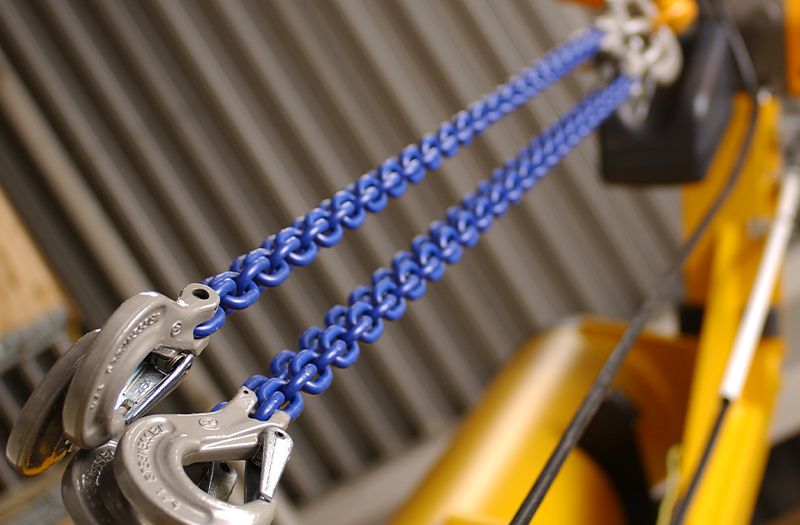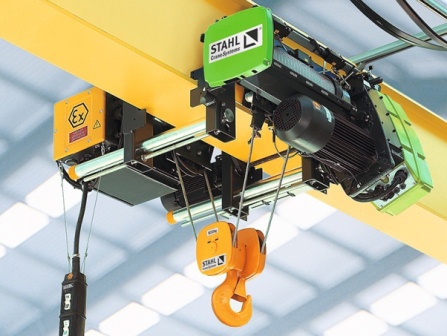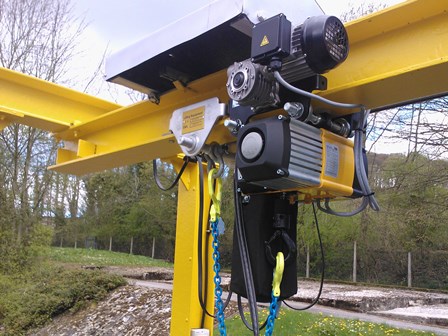Hoists are the component that makes it possible for overhead cranes, monorails, or work station cranes to lift heavy or bulky, freely suspended loads and are a critical part of lift cranes.
Its proper functioning is essential to guarantee the safety and efficiency of an operation. Whether manually, air or electrically powered, all hoists should be inspected routinely at a variety of intervals, including prior to use at the start of a shift, frequently, or periodically (annually for normal duty; semi-annually). for heavy duty; or quarterly for severe duty application).
Sometimes an inspection will reveal damage that can be repaired. In this case, the hoist must be removed from service and not used until the repair is complete. However, if the repair is not sufficient, the hoist will need to be replaced with a new one.

Crane hoist replacement period
To help hoist owners make that determination, here are four key signs that a hoist should be replaced:
Hoist problems
If a hoist perpetually fails to function as expected, for example, if it responds slowly or inconsistently to manual operation or to remote or hardwired controls, or if it requires multiple replacements of the same parts at frequent intervals, your Improper operation is causing costly problems, unplanned downtime and increasing the potential for an accident. Therefore, it must be replaced.
Hoist Parts accessories
Spare parts not available. Some hoists are so well maintained and have performed so well over a long period of operation that they are beyond the manufacturer’s ability to support them and replacement parts are no longer available.
Alternatively, a brand of hoist may have been purchased by another supplier who no longer supports that model. Or the brand may simply have been discontinued.
When service parts can no longer be reliably obtained, causing extended periods of downtime, the hoist must be replaced.
Spare parts prices for hoists
When a problem is identified, but the cost of repair (parts, service, or a combination of both) exceeds 50% to 60% of the cost of a replacement hoist, the operation should seriously consider replacing the hoist and invest in a new one.
A newer model will be supported by the manufacturer, have replacement parts more readily available, and will likely be backed by a warranty for a period of time, allowing it to offer a better value than the broken hoist.
Hoist Inspection Checklist
In addition to pre-shift inspections performed by the operator, in-house maintenance technicians, manufacturers’ service representatives, or an independent hoist inspection professional should perform more detailed frequent or periodic inspections.
These hoist evaluations can reveal a problem that is not visible to an operator.
The inspector will look for excessive component wear, cracks, distortion, warping, or other internal damage, or any other parts that show signs of possible failure. Based on that evaluation, the hoist may be deemed beyond reasonable repair and replacement is recommended.

Critical lifting examples
What is a critical failure of a Hoist or crane lift?
In the crane and rigging industry, a critical lift is a rigging activity where a comprehensive plan is needed to minimize the risk of crane failure or catastrophic loss.
As for the term “critical lift”, while there is no single universally accepted definition or industry standard used for categorization, there are a number of elements that are common to various rigging industry agencies and associations.
OSHA characterizes the definition as follows: a critical lift is one that
- exceeds 75% of the rated capacity of the crane or derrick, or
- requires the use of more than one crane or derrick.
The following are some of the items that appear most often in a critical survey, keeping in mind that specific projects have unique conditions that must be considered:
- Any lift that requires more than one crane
- Loads that exceed 75% of the rated capacity of a crane
- personnel lifting
- Cargo suspension above rigging personnel
- Loads that are not in sight of the crane operator
- Lots of exceptional value
- Cargoes that have the potential to become unstable during rigging

Types of hoists
A hoist is basically construction and material handling equipment that is used to move the materials from the building’s ground to the top floor.

Electric Hoist Trolley
Electric Hoist trolley provides the ability for a simple hoist to become a laterally traversing versatile piece of equipment. Powered trolley hoists come in different types, including air and electric and capacities.

I Beam Trolley Hoist
An I-beam trolley is a wheel mechanism from which a hoist is suspended to provide horizontal movement of the hoist along a beam or bridge rail.
